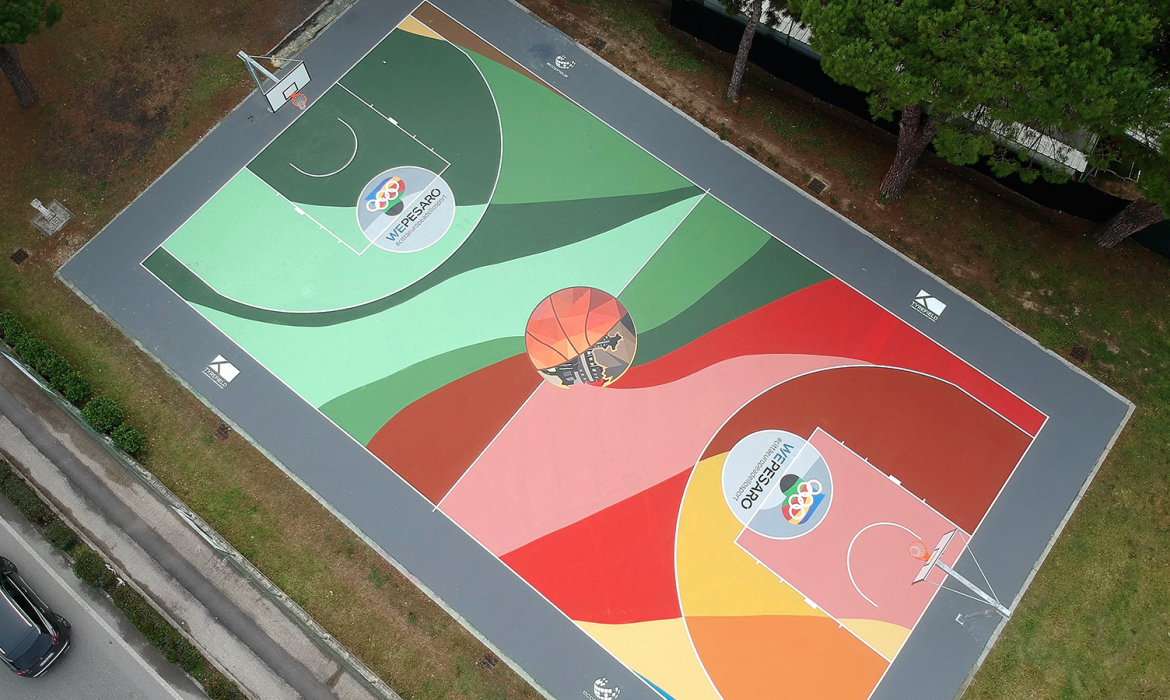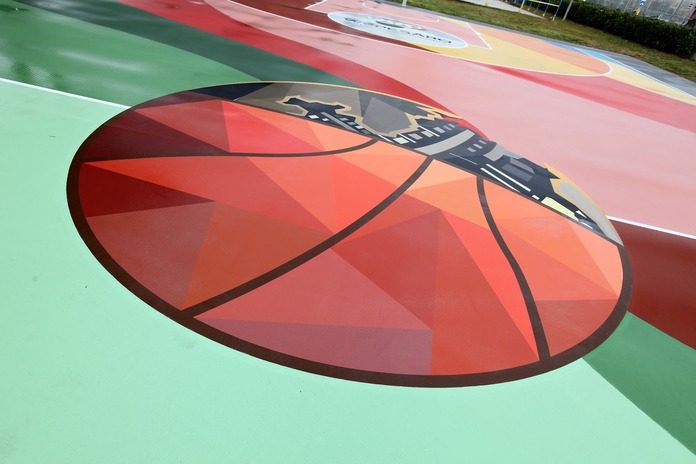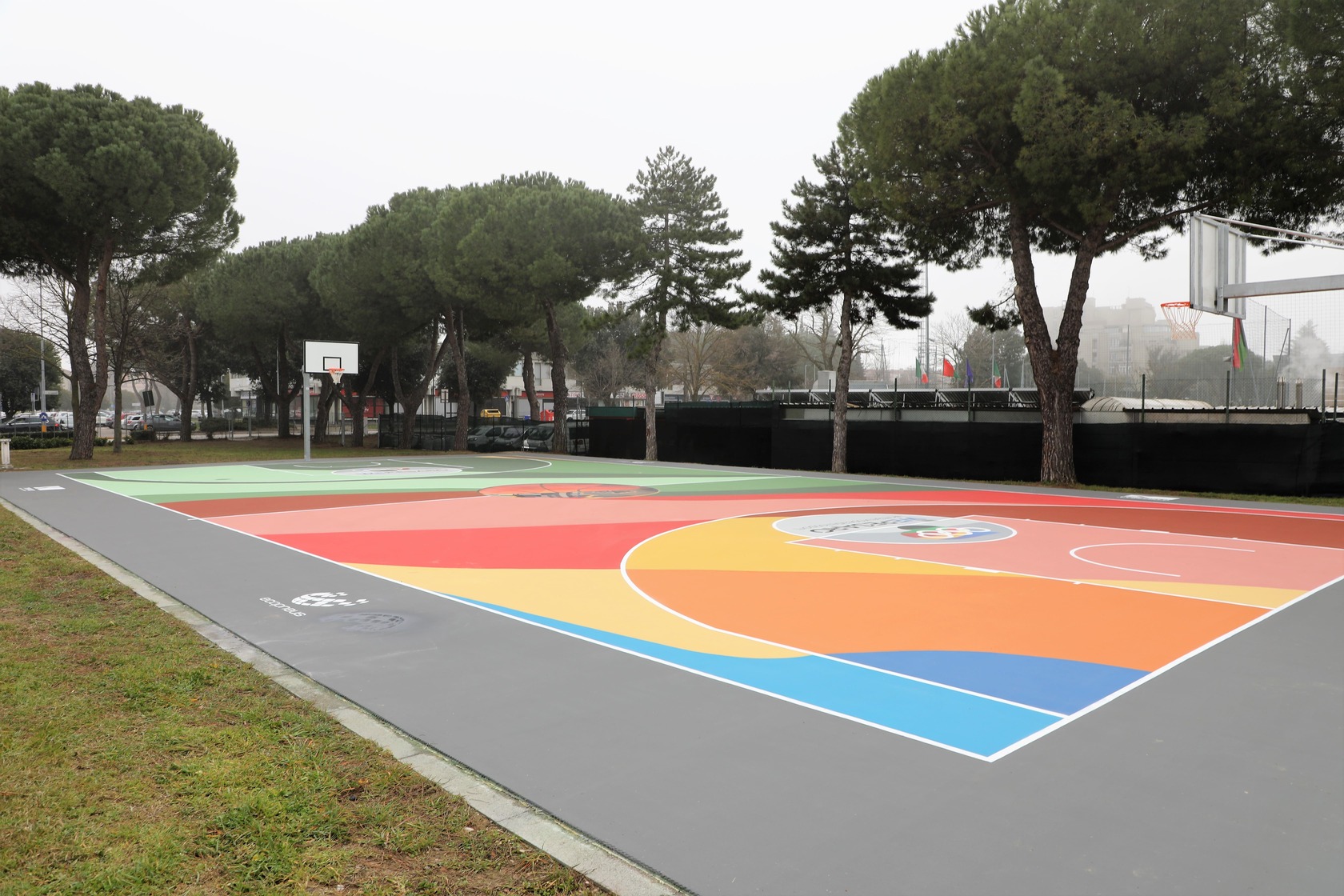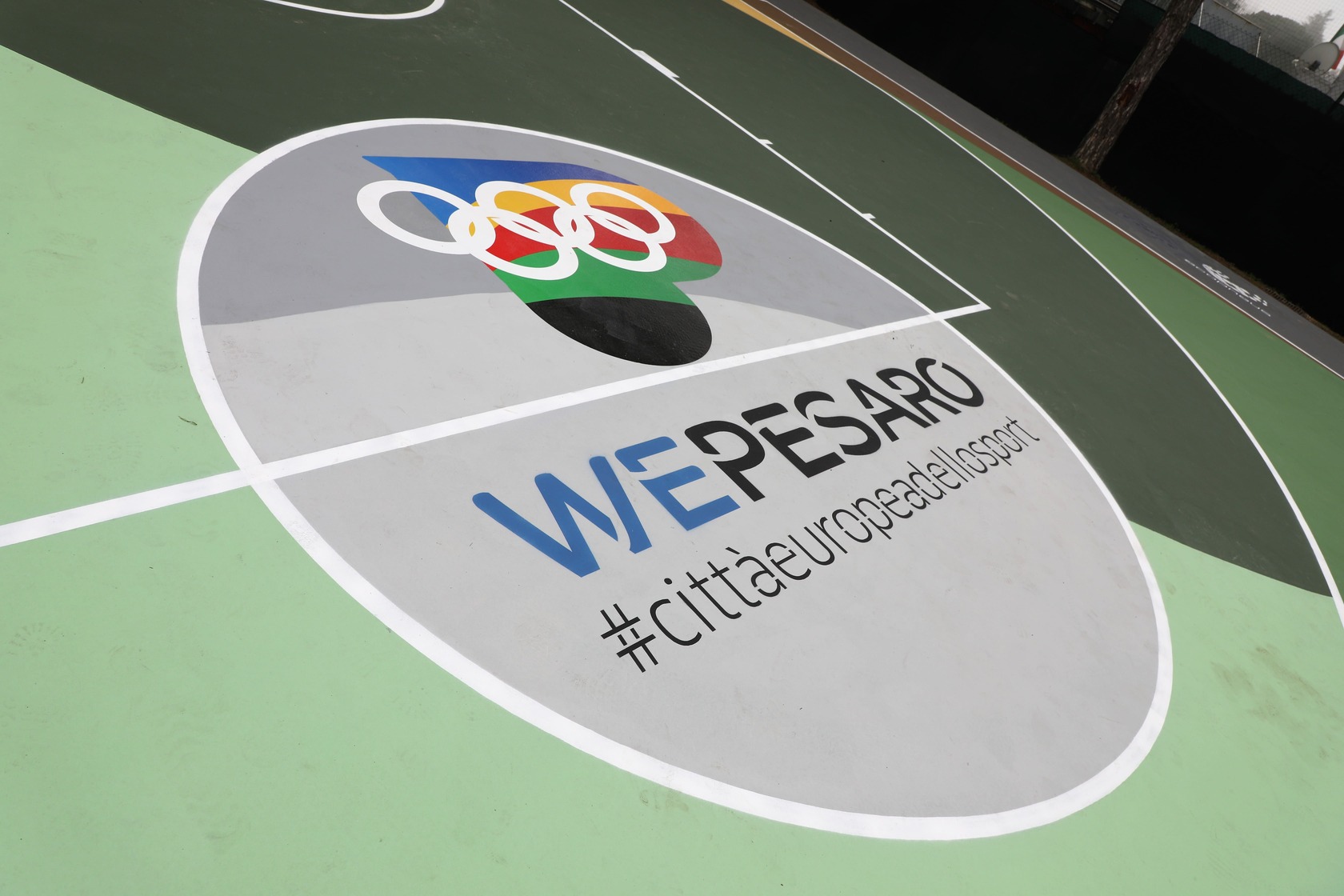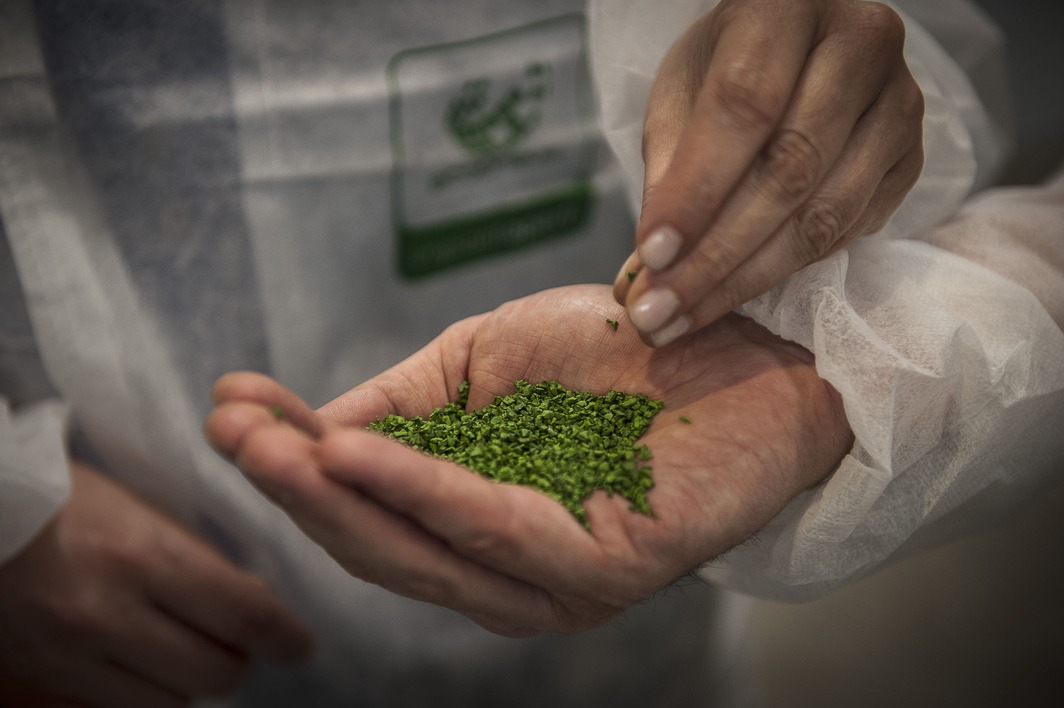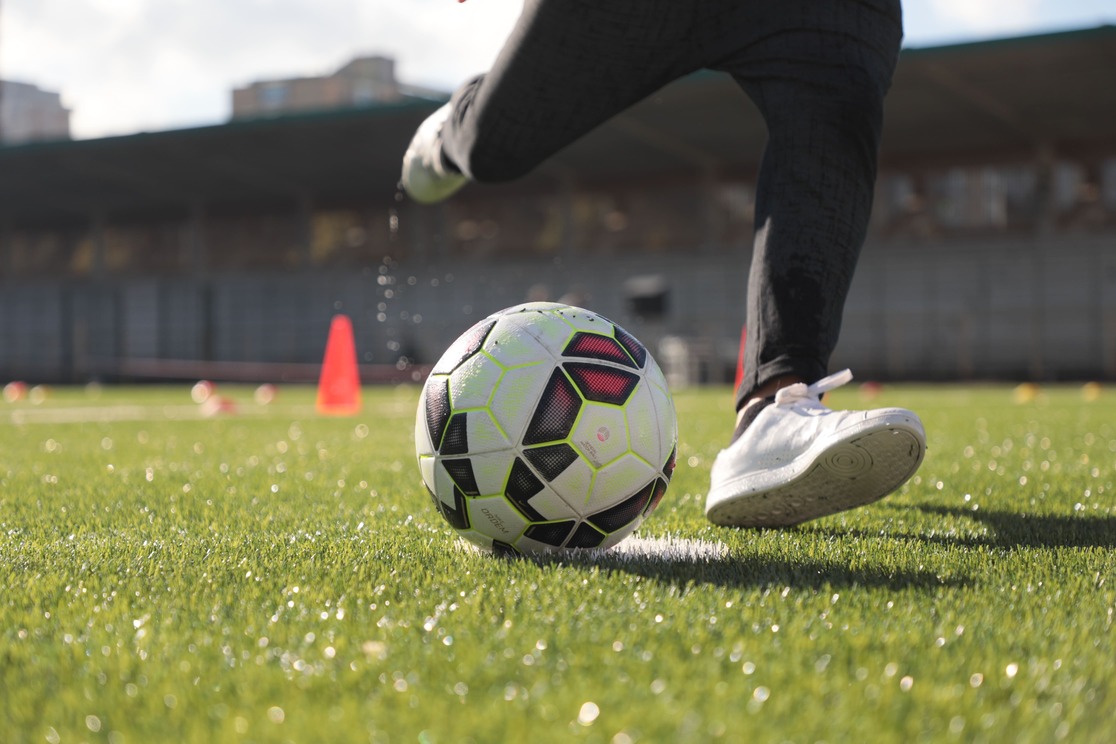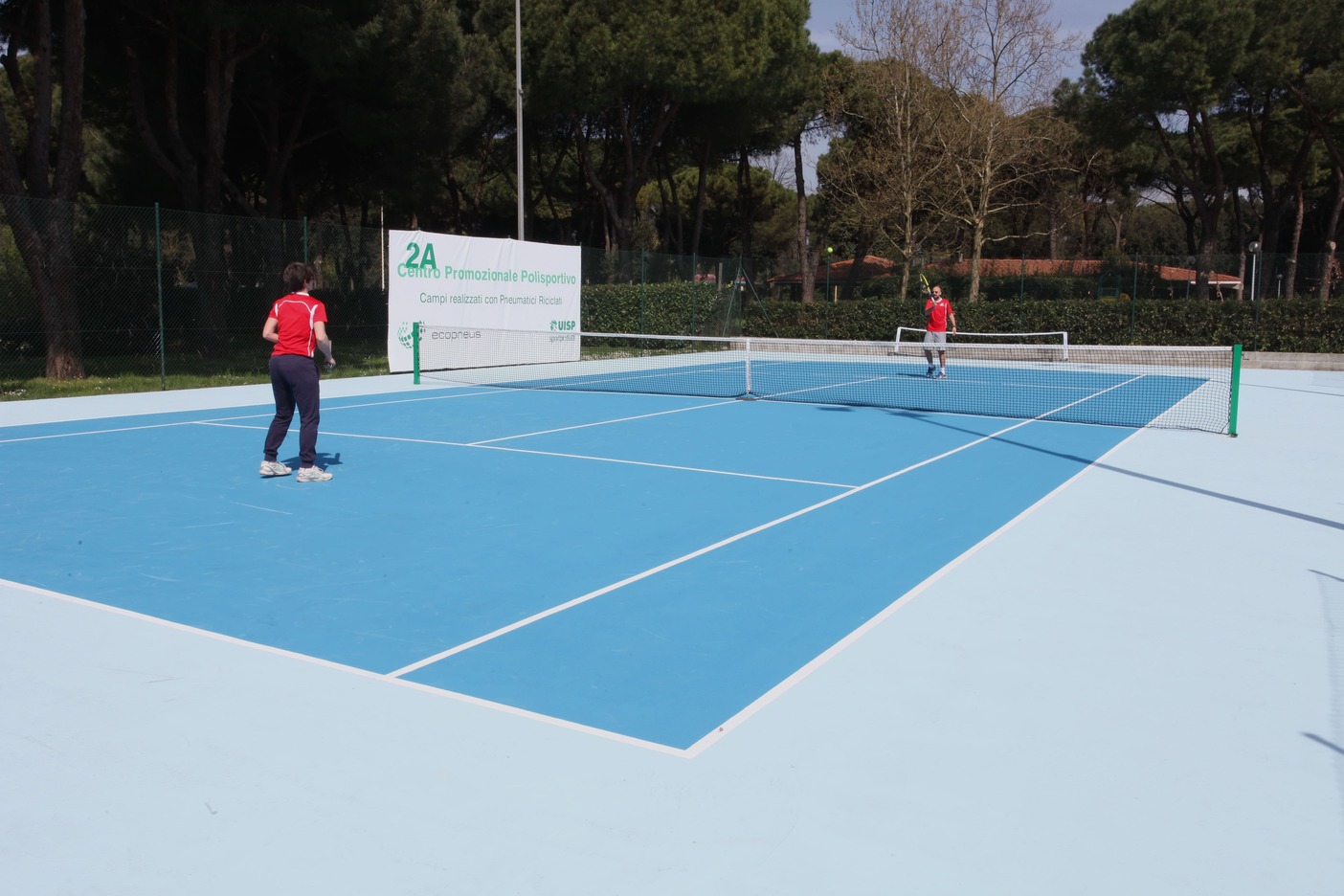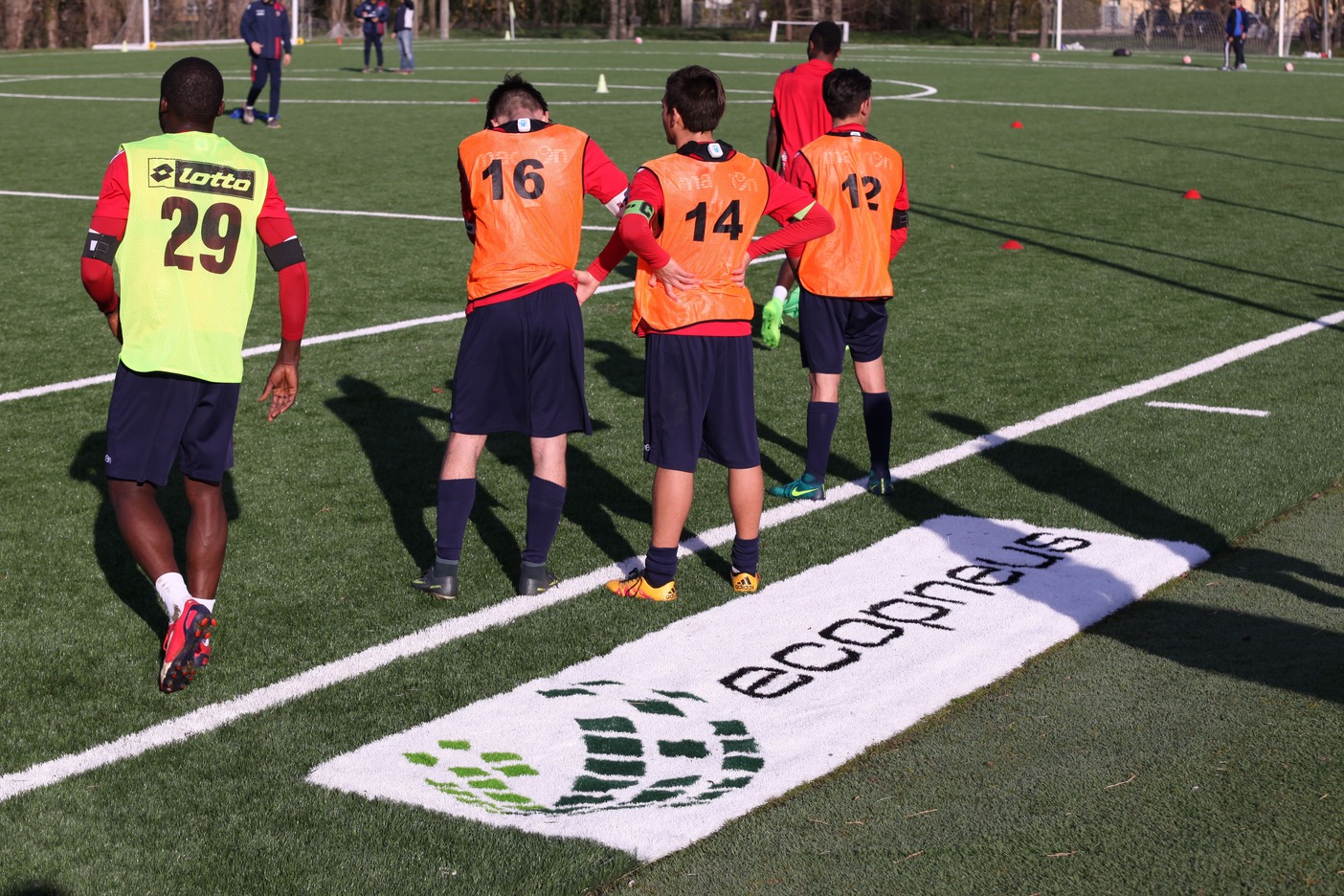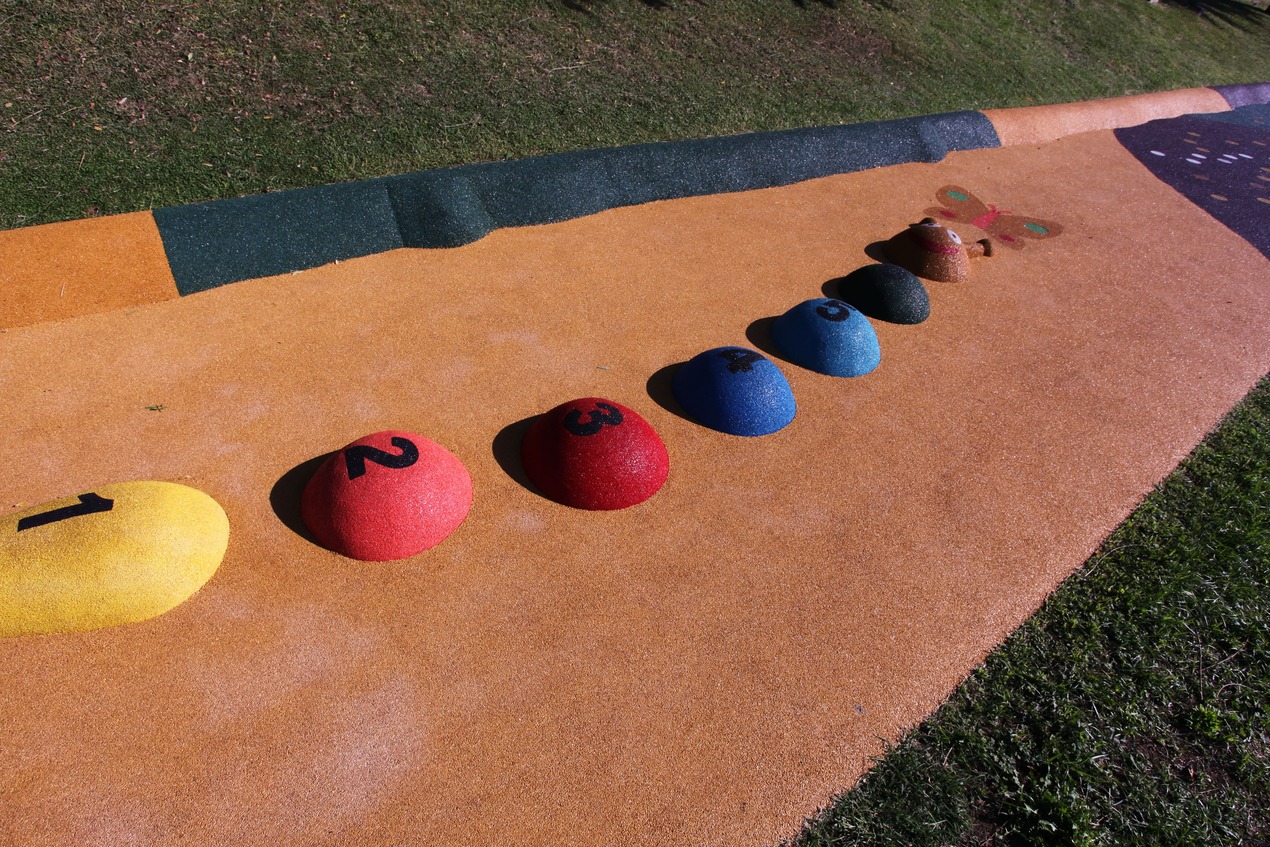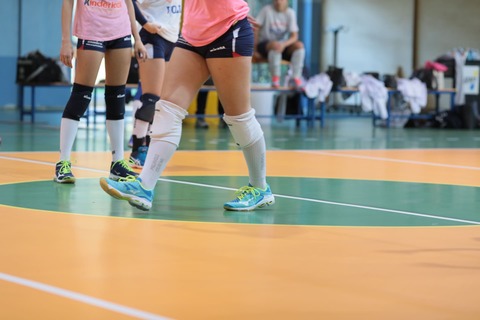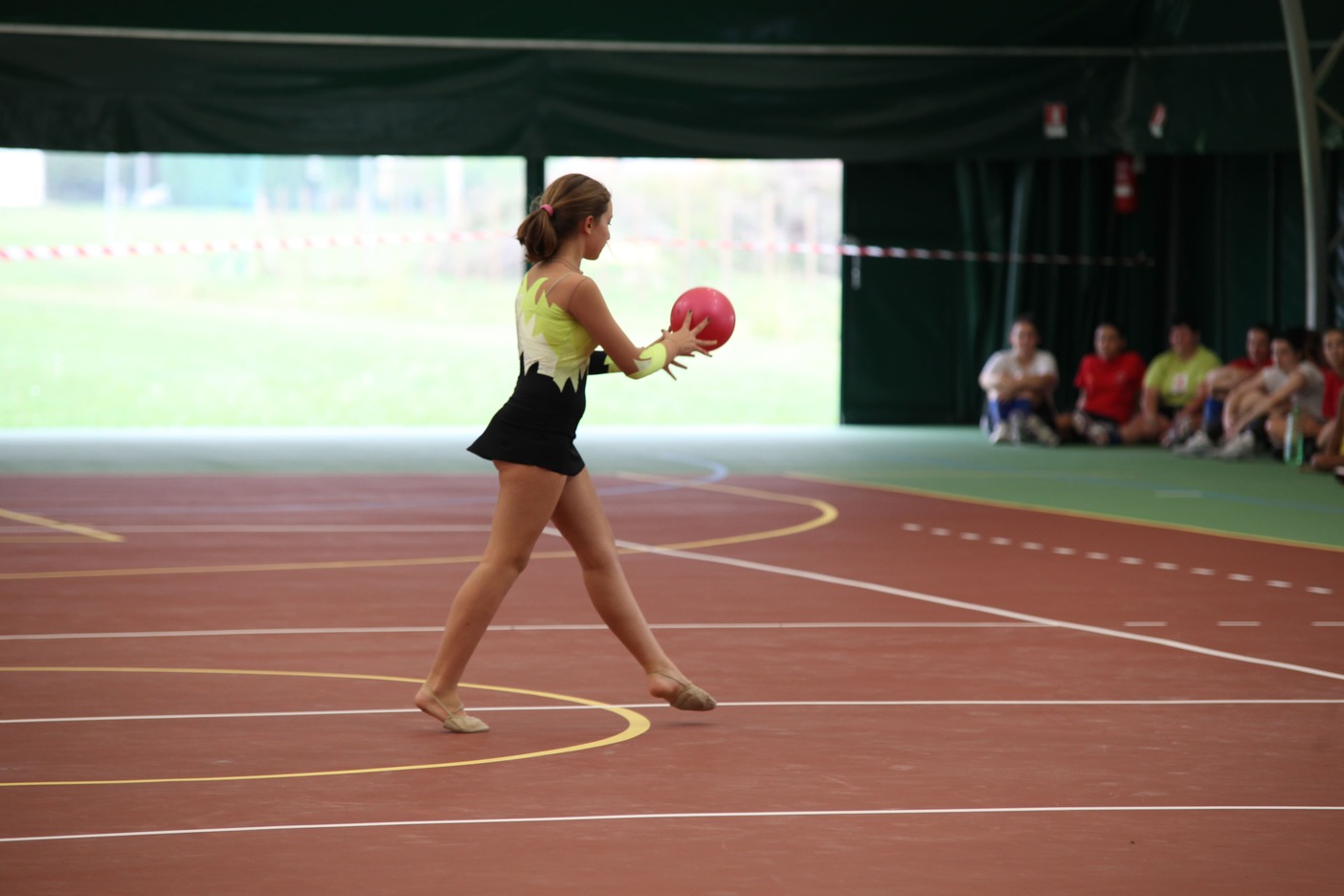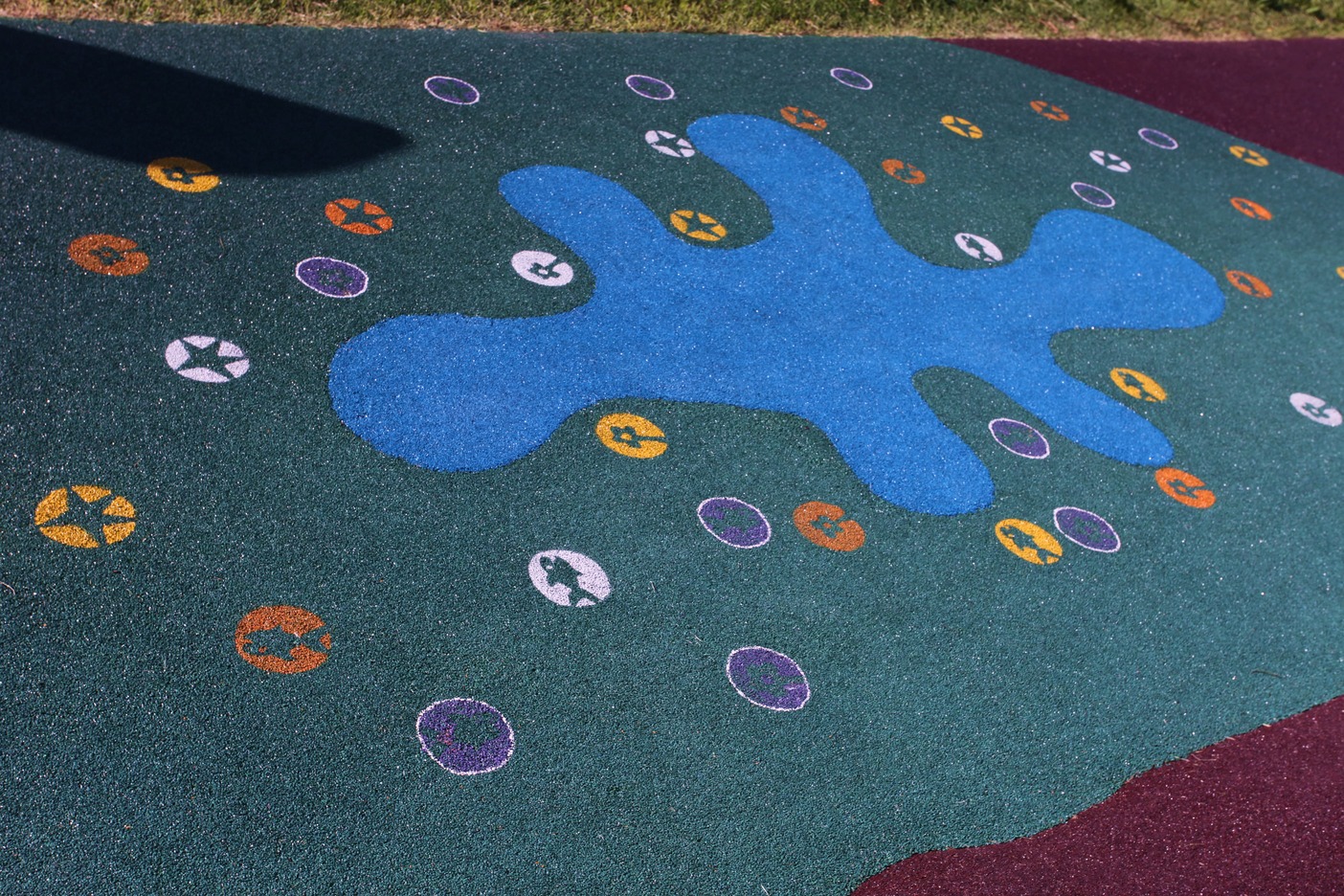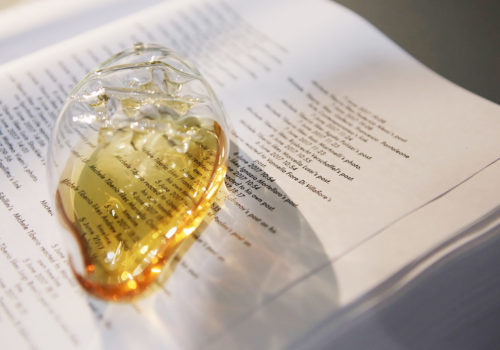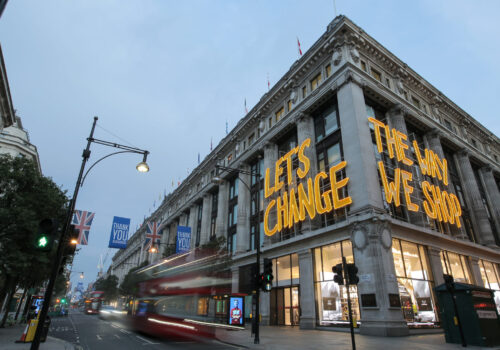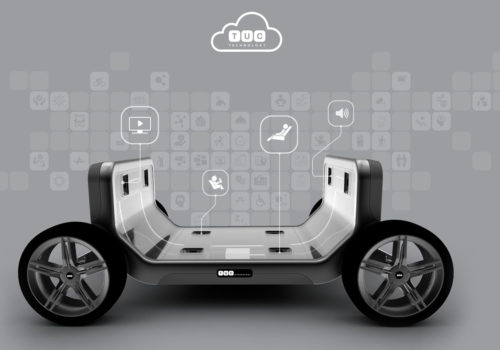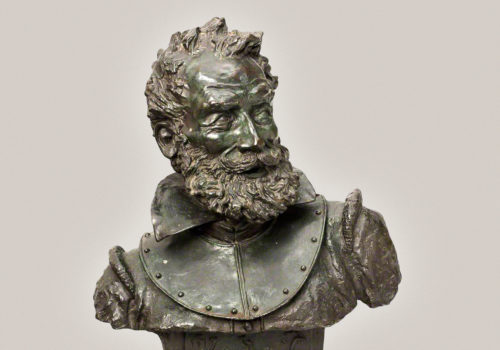The leader of these projects is Ecopneus, which in 10 years has handled over 2.2 million tons of ELTs
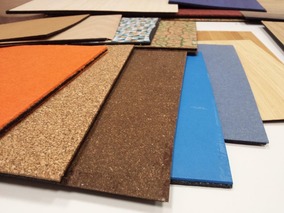
Multipurpose sports courts both outdoors and indoors – from soccer to basketball, volleyball to tennis, asphalt modified to be more durable and less noisy, play areas in public spaces and surfaces made for horseback riding. As well as urban furniture, such as traffic barriers or speed bumps, or acoustic insulation and antivibration materials, from acoustic panels to anti-impact mats, waterproofing membranes and earthquake protection solutions. These are just some examples of the possible “second lives” of used tires, applications in daily life for a waste material, following a model of circular development in the interest of sustainability.
The most recent projects have been inaugurated in several Italian cities, from the new basketball court in Pesaro, a city in the Marche region with a consolidated basketball tradition, and the new soccer field, with a strong social connotation, inaugurated in Rome in an iconic neighbourhood of the Roman periphery, a laboratory for urban regeneration.
Support for a significant part of the projects that rely on the use of recycled rubber in Italy is provided by Ecopneus, a non-profit organization and primary operator in the handling of ELTs – End of Life Tires – on the national level, which handles about 60% of the end-of-life tires generated every year in Italy. Over the past ten years (from 2011 to the present), the group has handled over 2.2 million tons of ELTs with over 700,000 missions to collect them from 25,000 tire centres registered in Italy. Some of the most significant are targeted operations in emblematic territories, such as the 87,000 tons of used tires retrieved in what is known as the Terra dei Fuochi, the Land of Fires.
Last month, the new Villa San Martino basketball court was inaugurated near Pesaro, a playground that is the symbol of basketball history in the city, created by the City and by the Lega Basket, with the support of Ecopneus: over 3200 kg of recycled rubber was used to generate an innovative high-performance honeycomb-structure mat, to which surface resins were applied to forge a system that responds to the requirements of the International Basketball Federation, and which will be tested for certification so that it can also be a venue for official international competitions. The innovative high-tech surface was also the subject of a competition for graphic designers for the customization of the playground (including the choice of colour), decorated with geometric motifs and the logo WePesaro «European City of Sport».
Other basketball courts have been built in recent years, in Bari and Milan among others. These are projects – intended for urban regeneration grounded in principles of environmental sustainability for the creation of a gathering place and sports centre in the city – that « best represent how we provide information and create awareness of the infinite potential of recycled rubber » stated the director general of Ecopneus, Federico Dossena.
Basketball, football and paddleball courts as well as silent asphalt, acoustic insulation and much more, can benefit from the properties of this material, which can contribute in practical terms to making our cities ‘greener’.
Federico Dossena, general director of Ecopneus
Another example is the eleven-player soccer field made of synthetic grass based on recycled rubber, inaugurated on February 26th this year, in the presence of the President of the Republic Sergio Mattarella, in the Campo dei Miracoli zone at Corviale in Rome, a peripheral area that is a laboratory for sustainable urban regeneration in the Capital city. The project, the result of a collaboration between the amateur sports club CalcioSociale and the Istituto per il Credito Sportivo, aims to implement activities that bring people together to improve the quality of sports they can offer.
Synthetic grass fields have also been installed in recent years in the sports centres of the Atalanta, Bologna and Udinese football clubs, in the Landieri stadium in Scampia (Naples), in Caserta, Ronzone (Trento) and many other schools across Italy thanks to Ecopneu’s Educational project.
The use of materials derived from end-of-life tires, as mentioned earlier, goes beyond sports. There are applications in roadwork, for example, with stretches of modified asphalt built from the South to the North of Italy: such as the road built in December at Robbio (Pavia), using about 8000 square meters of tar mixed with 10 tons of recycled rubber from approximately 1500 ELTs – on Viale Gramsci, the road that connects the ringway and the city centre, or in Castelvetrano (Trapani), to fix the paving on a part of the road near the exit from highway A29, at the entrance to the Sicilian city.
As of today, Ecopneus announces, there are over 520 km of asphalt roads in Italy built with tar mixed with recycled rubber. The addition of the “powder” from used tires improves the physical properties of the tar, by reducing the noise it produces (by up to 5 Db); increasing the durability of the paving (up to three times greater than traditional asphalt); improving water drainage and resistance to surface cracking.
Translated by: Olga Barmine
© ALL RIGHTS RESERVED


